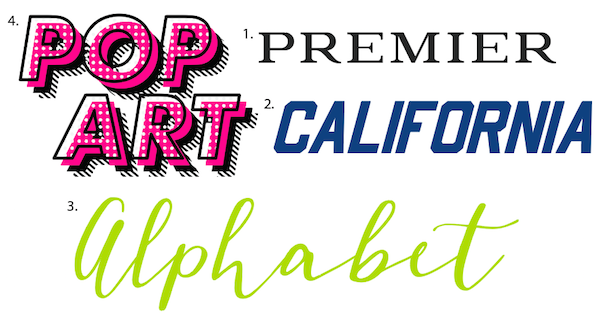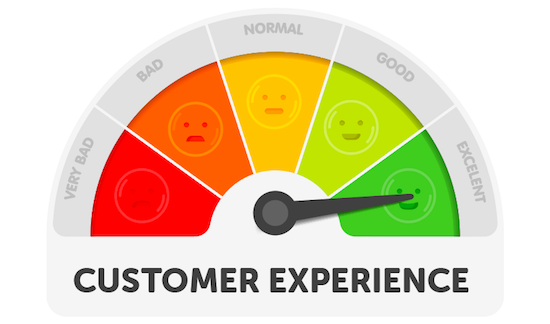How to Create and Fine-Tune Your Brand Identity to Grow Your Business (+ Exercises & Templates)10/13/2021 Without reaching out to Google for an answer, what’s your definition of brand identity? There are many ways to come up with quick responses — such as how people perceive you, how well they recognize you, or what makes you stand out from the competition. And while all of these components are true, the answer is a lot more nuanced. The reality is that it takes time and strategic planning to come up with the most accurate answer. A lot of research, a significant amount of introspection, and dedication. Thankfully, there are roadmaps you can follow to get this right. And once you do, watch its positive impact on your business. What Is Brand Identity? Brand identity isn’t just a fluffy, abstract thing you check off your to-do list in your first marketing meeting. It’s not creating a logo, plastering it in a few places, and calling it a day. Brand identity is a tangible, concrete collection of every element you create to showcase the image of your company to your audience. But let’s not conflate brand identity with related terms that are often used interchangeably:
Rather, your brand identity acts as the face of your business, and it consists of several components:
Sounds like a lot – and it is. Defining and establishing your brand identity requires some time, reflection, and effort. But, it’s this process that can be a valuable exercise to help your company better understand its goals, audience, and the entire direction of how you create customer experiences. The first place to start? Understanding what your brand actually is. Why Brand Identity Is So Important No matter what it is you’re selling, chances are that there are plenty of other businesses doing it, too. Maybe you truly believe that your product or services are better, but it takes a lot more than that to make you unique. It Gives You a Personality. The most popular brands all have specific characteristics attached to their reputation. Apple is sleek and modern. Disney is always positive and happy-go-lucky. Starbucks is friendly. LinkedIn is professional. TikTok is young and fresh. You get the idea. All of them evoke certain emotions from their target audience — so even before interacting with anyone, they’re already communicating what they’re about. It develops recognitionWhen you have a noteworthy personality, people begin to remember you and to instantly recognize you. It’s how everyone knows ASPCA commercials will likely make them cry; Snickers commercials are funny, and most people can relate to receiving Amazon packages almost on a daily basis. It Builds Trust. People are more likely to purchase from a brand they’re familiar with. They’re also more likely to purchase a newly released product from a familiar brand; and to rely on friends’ recommendations of their trusted products. Therefore, it’s crucial to be proactive about increasing your brand awareness for business longevity. How to Define Your Brand There are a few considerations you need to step back and analyze in the earlier stages of branding. To fully define your company’s brand, follow these easy steps: Define Your Unique Value Proposition. What makes your company stand out among your competitors? A value proposition is what tells your customers how your product or service can solve their problems, what they can expect from your product/services, and how doing business with you would be better than anyone else. By defining your unique value prop early on, you can help make a better first impression on consumers and differentiate yourself as a business. Determine Your Target Audience. Who are you selling to? Recognizing who your ideal buyers are is crucial. It can help you build an entire marketing strategy targeted toward their pain points, needs, and desired goals. If you haven’t nailed down your target audience, your marketing and branding efforts probably won’t be as effective. Create a list of your top buyer personas who represent your ideal customer base. This way, you’ll be able to create niche strategies that will attract the right people to your business. Establish Core Values and a Clear Mission.Developing and implementing a mission statement and core values into your business is what keeps the fire going. A solid mission statement will inspire and transform your business in the direction you desire. And your core values are the guiding principles that shape a company’s decisions along the way. Basically, they’re essential to motivate your business to be the best that it can be — and by establishing them, you’re also solidifying how you perceive your own company as a brand. Define Your Brand as An Employer. Building a brand isn’t just considering how consumers see your company — It’s also how your employees and job candidates see it. Your employer brand is basically your reputation, and it’s often created from your core values and mission statement. It’s what attracts good-fit candidates who align with your values, and it builds positive brand recognition, which naturally circulates back to consumers. Once you understand your brand at its core, then you’re ready to fully develop and create your brand identity. Warning: This does require some deep introspection, so don’t think you can find your brand identity in 10 minutes! Choose the Right Colors and Typography. Once you know your values and what your brand stands for, look into the meaning of colors and the psychology behind color combinations. Believe it or not, this plays a major factor in influencing people’s purchasing decisions. Red is bold and confident and is often used by popular brands. Think of Target, Coca-Cola, McDonald’s, and CNN. Blue is associated with dependability — think of IBM, Dell, WordPress, Facebook, and Pfizer. Color psychology is real, and it explains the feelings certain hues evoke on people. So when it comes to designing a logo, creating a website, and selling brand-related merchandise, you want to be aware of which ones would best communicate your brand voice and personality. 10 Questions to Answer When Developing Your Brand Identity Ok. So you’ve honed in on your unique value proposition, established your company values, and chosen a related color palette. Now it’s time to expand on the details of your brand identity. Get your marketing team together and answer the following questions: 1. Who Is Your Buyer Persona? Based on your initial research in defining your brand, you should already have a strong idea of who your buyer personas are. If you haven’t solidified this, stop right now and get thinking. Understanding your audience plays a crucial role in how to build an identity around your brand. It allows you to put yourself in their shoes, identify pain points, challenges, and goals, and ideate your strategies to gain their interest. 2. What Are You Helping Solve? Again, your buyer persona research should give you insights into the pain points and challenges you’re striving to address. Your brand identity should consistently demonstrate how your company is able to solve your customer’s challenges. They need you for something, and you have to prove that you’re worth needing. 3. How Do You Stand Out From Competitors? If every company in the same industry marketed, advertised, and communicated its brand in the exact same way, life would be pretty boring. More so, it would be hard to guess which company a customer is going to choose. This is why it’s important for your company to distinguish itself from your competitors. You want to stand out from the crowd and make your brand presence more targeted and attractive. Running a competitor analysis can help your brand identify gaps in the market, spot new market trends, and market/sell more effectively and efficiently. 4. What Defines Your Brand Personality? To truly relate to your audience, it’s crucial to define the characteristics that make up your brand personality. A well-defined brand personality can help inspire the look and feel of your entire brand as well as guide the messaging you send and share across your website, stores, and even on social media. Consistent messaging and branding is what locks in your brand identity to the public, and it builds a personal connection with consumers. When it comes to your brand personality, think in terms of human personality characteristics. Some traits you might consider are:
5. How Do You Make Customers Feel? Explore what emotions and feelings you wish to evoke across all the interactions you have with your customers. Emotions play a powerful role in creating a bond and personal connection with consumers, especially if your company is solving a major problem for the consumer. Additionally, there are a lot of powerful emotions your brand can use to connect with its audience. Whether they’re ambitious or more understated, think about the experience you want to create for your customers. 6. Why Should Buyers Trust You? What makes your company so trustworthy, and how will you prove that you can be there for your customers no matter what? Every time I walk into a Starbucks, I know I can trust the employees I interact with. From the initial hello at the counter, to the way they always get my complicated order right, I know I can count on the baristas to be professional, friendly, and dedicated to excellent service and quick delivery. Consider how your company proves itself day in and day out. Think about how customers and prospects initially start believing in a brand’s ability to solve their problems and identify exactly how you currently do this or how you aspire to do this. 7. How Would You Describe Your Brand Identity? To define your brand identity, you first must think about how you view your business in terms of personality, appearance, and overall voice. One way to do this is to select five to 10 words that accurately articulate your identity. These often can relate back to your business’s core values, goals, and mission. For example, our Director of Marketing and Client Success, Rob, would choose these five words to describe Bluleadz:
8. How Do You Want Your Customers To Describe Your Brand? Beyond what you think of your brand, consider what others think of your brand and what you want them to think about you. By putting yourself in your customer’s shoes, you can identify what your main goal is when it comes to creating a positive perception of your business. 9. How Does Your Logo Represent Your Brand? Your logo is the first thing people notice about your brand. It’s a concrete symbol of your company’s identity and creates a lasting first impression with consumers. Because of this, people have grown to associate logos with company values, message, and character. Take a step back and look at your company’s current logo. Does it:
*God forbid your hip new logo looks outdated next year. 10. How Does Your Style Communicate Your Identity to Your Audience? Similar to your logo, the various elements you choose to incorporate into your brand design can impact how your brand is perceived. These elements include typography and colors. Color is commonly associated with emotions:
Because of this, it’s important to consider what colors you want to represent your brand, both in your logo and in your overall branding. Typography refers to the certain fonts you utilize throughout your brand. Similar to the connotations colors receive, typography often gets associated with characteristics:
Apple strives to create a sleek, modern experience for its customers, not only with the products they sell but with the service they provide. In turn, they utilize a simple sans serif font across their company. On the other end of the spectrum, Coca-Cola is famous for their red script logo, which, thanks to the company’s excellent brand identity, is iconic. Outside of asking these questions about your brand, there are also a few other exercises you can do to dive deeper and fully articulate your identity. Brand Building Exercises to Help You Find Your Brand Identity These five exercises, similar to the questions you asked above, will take some time to complete. However, they are meant to help you paint the full picture of what your brand should look like and the identity you want to curate for your audience. Here are a few exercises to do with your team: Audit Your Current Brand Identity. This is an important first step to take if you’re looking to rebrand your business or just improve your branding altogether. To start, determine where your brand is missing the mark: Are you not accurately portraying your brand personality? Are you selling to the wrong people? By examining your current branding efforts and analyzing their successes and failures, you can spot areas of adjustment and improvement. Research Brands You Like. Everyone looks up to someone. If you don’t, you’re probably reaching a plateau — you don’t have anything that makes you work harder. Seeking inspiration from other businesses can help you better define your voice, how you want to present your business, and how you should interact with your customers. Jot down a quick list of brands you love. For each brand you list, explain what you like about their branding efforts, and brainstorm how you can translate those efforts to your own company. Remember not to copy them. Take what you’ve learned from these admirable brands and adjust it to reflect your company’s values and efforts. Identify Where to Simplify Your Brand Identity. Sometimes, there just might be too many things going on at once when it comes to your brand, which can cause confusion or even frustration with your audience. Pick apart your current brand elements one by one, then analyze them as a whole to see how they work together. Looking through this lens can help you find branding areas that might be too cluttered or distracting. This, in turn, will allow you to select only the strongest elements to rebuild your brand to be more clear and representative of who you are. Test the Perception of Your Brand. Sure, you may think your brand identity is built one way, but it actually could be the complete opposite. Seek out the advice from the people who matter most — your customers. Whether it’s A/B testing colors, fonts, and logos, or sending customer surveys for open feedback, understanding what they’re seeing versus what you’re seeing can be a huge indicator of how well you’ve identified your brand identity. Measure the Customer Experience. At the end of the day, your successes come from how well your customers interact with your brand. Therefore, measuring the customer experience can help you uncover underlying factors in your current brand identity and ways to improve it. Seek feedback before and after the brand identity implementation to see the impact it had on the overall customer experience. A few metrics you should look at when you assess the customer experience are: Customer Satisfaction How satisfied are your customers with your product or service? You can measure customer satisfaction by asking customers to rate their level of satisfaction with your company products, services, or overall experience (on a scale of “not satisfied at all” to “very satisfied”). Net Promoter Score (NPS) Would your customers recommend your company to friends, family, or colleagues? To calculate NPS, ask your customers if they would recommend your company to others (on a scale of 1-10.) Then, subtract the number of detractors (people who respond 0-6) from the number of promoters (people who respond 9 or 10). Churn Rate Will your customers buy your products/services again? Customer churn rate is the percentage of customers who cancel or don’t renew a subscription to your business. This is mostly important to companies who sell based on monthly subscription plans. To calculate your churn rate, divide the number of lost customers by the total number of customers acquired. How to Fine-Tune Your Brand Identity Ok. So now you know what to do to establish a brand identity. Maybe you’ve been doing it successfully for a while, and it’s worked out well. However, as with many things in life, brands sometimes have to evolve. Think about how Netflix first started by mailing DVDs to what it is today. Or how Apple took the market by storm by releasing the uber popular iPod, only to do away with it once they started releasing iPhones and iTunes. By the same token, you should stay on your toes and look for ways to refresh your brand whenever it may need it. To do so, keep in mind the following tips: Serve a Niche Within Your Industry. Finding a niche market means narrowing down your focus on whom you’re serving. For example, let’s say you sell running shoes. There are plenty of options for people to choose from. Maybe you’re doing ok, but you’ve noticed a trend: Overpronators leaving your store because they don’t have as many options; or thanking you for offering options they can’t find elsewhere. If you notice similar trends, conduct market research to determine whether a specific segment of your target market is being overlooked, then focus on serving them. Reevaluate Your Competition. Even though you already evaluated your competition when you first started your business, this should be an ongoing process. Going back to the Netflix example, if you were, say, Blockbuster when they first started out, you may have found their efforts non-threatening. Yet innovation always wins the game, and you should always ensure that you’re offering the same services — or better yet, improve on them — if you want to stay relevant. Keep Brand Consistency Across All Channels. Your logo, website, business cards, newsletters, social media posts, and all communications and marketing materials should be consistent on all platforms. This makes it easy for people to immediately recognize you. It also makes your business look professional. This includes every aspect of your brand: tone, voice, colors, typography, headers and any other visual elements. Keep All Marketing Assets Accessible to Your Team. In order to achieve the above-mentioned consistency, all marketing team members should know where to locate brand and campaign assets; as well as have log-in information for your content management system (CMS) platform. This will allow them to publish new content or make modifications without scrambling to find the right elements. By the same token, make sure to keep your company’s brand guidelines and style guide available to anyone who may need them for their job roles. Choose the Right Social Media Platforms. While it may be tempting to have an account on every social media platform under the sun, the reality is that your target market probably spends their time in two or three of them. Find out what those are and focus your efforts there. To make it easier, invest into social media management tools, so that you can automate tasks and schedule all posts from one centralized location. Publish Content Consistently. Out of sight, out of mind. The adage is popular because it’s true. Plus, when you regularly demonstrate your expertise and provide valuable content to your audience, you build trust and credibility. This can be in the form of blogs, podcasts, videos, social media live streams, or anything else that your buyer persona would enjoy consuming. Remember, this is about them, not about you; so publish according to their preferences. Also, pick a regular schedule to publish (the same day of the week, the same time of the day) and stick with it. This way, your target audience will know when to expect your content. And just as with researching their platforms and formats of choice, research the publication times they’ll be more likely to see it (also known as social timing). Repurpose Content. Repurposing content consists of taking existing content and either updating, redesigning, or adjusting for a new medium. Examples include turning a blog into an infographic, an infographic to a video tutorial, a podcast into a blog, optimizing old blogs, etc. It’s a useful tool to leverage what you already have, and it’s extremely helpful when it comes to producing content faster — especially when you’re having a hard time coming up with new ideas. Establish a Marketing Calendar. Developing a content calendar is crucial if you want to (a) save time, (b) be efficient with your time, and (c) make sure you have a steady stream of ideas for the future. This includes creating editorial calendars for blogs and social media posts, as well as ads and other types of marketing materials related to future events, sales, promotions, and holidays. This way, you’ll eliminate writer’s block, ensure that you publish content consistently, and enable better project management. Request Feedback From Your Customers. The most reliable way to gather information is straight from the source. Asking for customer feedback brings many benefits — it lets you identify insights you could’ve otherwise missed, provides you with the opportunity to give them exactly what they want, and lets them know that you value their opinions. In other words, you’ll be landing on a goldmine of information and customer satisfaction. Use This Downloadable Brand Identity Worksheet Want to take these questions and exercises on the go? Here is a handy template your business can use to fill out so you can create a memorable brand identity. A strong brand identity paves the road for several opportunities for you to grow your business. Don’t let that go to waste! Consider your audience, intentions, goals, and how you can make your company stand out from the crowd. Remember that your brand identity represents who you are and how you want to portray your company values and efforts to your customers. With a strong brand identity in place, you can crush your competition and delight your customers! Source: https://www.business2community.com Image Credit: WikiCommons
0 Comments
Leave a Reply. |
Membership is open to businesses and organizations interested in increasing visibility and brand awareness in Westchester County and surrounding areas.
Archives
May 2024
Categories
All
|





 RSS Feed
RSS Feed